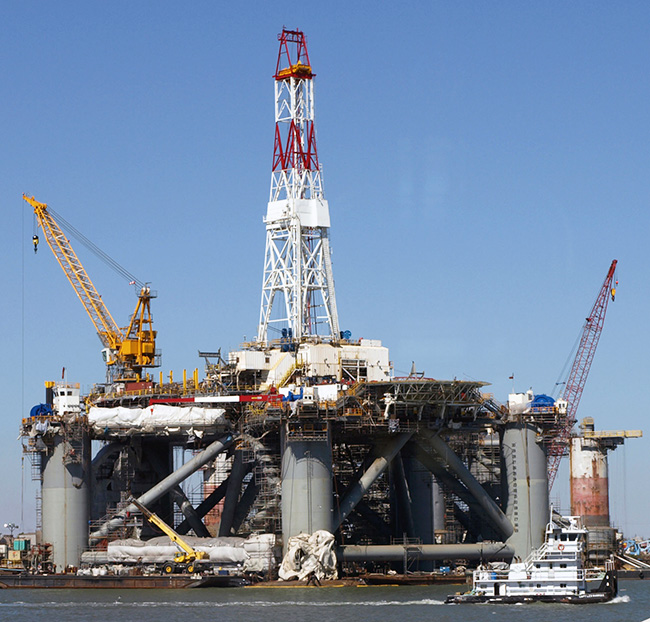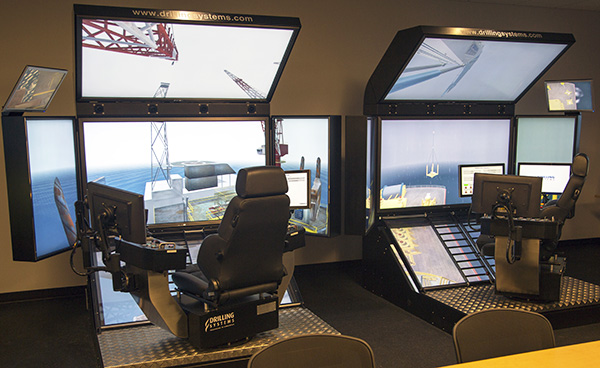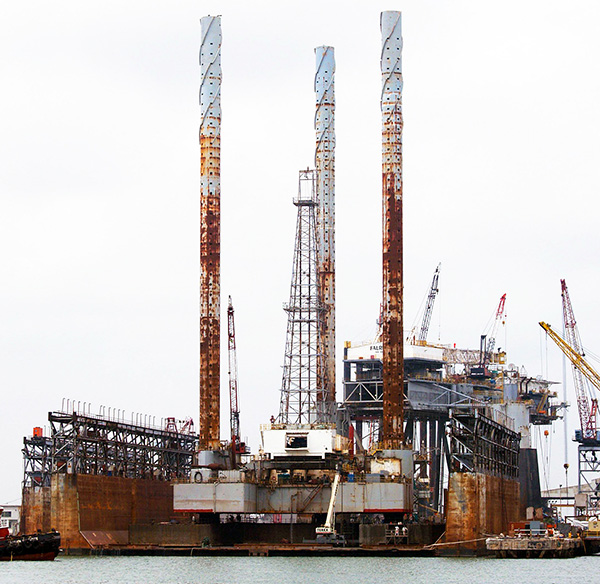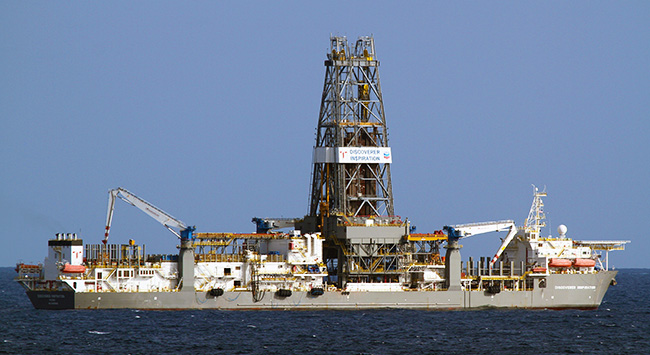Oil Under the Sea
Today, oil under the sea. The University of Houston's College of Engineering presents this series about the machines that make our civilization run and about the people whose ingenuity created them.
Oil lies beneath the surface of both land and sea. There's a lot more sea than land, but drilling under a thick layer of water is tricky. The first time anyone tried it was through the shallow waters of an Ohio reservoir, in 1891. Five years later, small oil companies drilled wells from piers in Santa Barbara Channel.
But, offshore drilling evolved fitfully 'til after WW-II. Then we took it up in earnest. First, fixed platforms sat on the sea bottom. The tallest of these eventually reached a depth of 1700 feet. Then compliant towers, and floating platforms anchored to the bottom with tensioned cables. They got even deeper.
For shallow water, oil people developed the jackup rig. It's towed into place with its long legs sticking up into the air. Then those legs lower until they stand upon the bottom.
But we do really deep drilling from free-floating platforms that take many forms. Semi-submersible platforms sit on tall pontoons. They're towed into position, then sunk 'til the pontoons ride below wave action so the platform stays stable. And the drillship: It's a regular ship with a large hole through the middle called a moon pool - below a drill tower. It sails into position like any ship, then drills down through that open center.

A Semi-submersible platform, unsubmerged, in Galveston Channel.
It's not practical to moor a floating platform to the bottom when water's much more than a mile deep. So, instead of cables, thrusters correct those huge platforms' positions to within few feet of vertical above a drill-hole far, far below. They do it automatically - no human intervention. Very complex control systems endlessly turn and activate the thrusters.
By the way, the first job of the first oil drillship was not drilling for oil. Rather, NSF used it in the 1961 Project Mohole. That was an attempt to drill through Earth's crust into its mantle, through the Mohorović, or Mohole, discontinuity. (Life magazine put author John Steinbeck on board the ship to tell its story.)
They managed to penetrate the seabed two miles down. But no one yet has made it all the way through the Mohole layer. Still, after that first run, oil and gas drillships proliferated.
And I caught a glimpse of their complexity last month. The Noble Corporation runs drillships for oil companies. They showed me their training facility for people who operate those complex drilling units. I saw simulators that would make an astronaut's head swim. They have to optimize power to that array of positioning thrusters. They operate cranes and manage the feed of pipe through the moon pool, as the hole goes ever deeper. They learn crisis management along with fluid flow management. This is not casual work.

Simulator for knuckle crane operation on a drillship. One of several such units at the Noble Corp. Training Center.
One day, we'll perfect nonfossil fuel alternatives. - rather sooner than later, we all hope. Meantime we run on oil and natural gas. And the inventive genius that provides those fuels never ceases to leave me wide-eyed at its audacity.
I'm John Lienhard at the University of Houston, where we're interested in the way inventive minds work.
See the Wikipedia articles on Offshore Drilling, Jackup Rig, Semisubmersible Ship, Oil Platform,Spar Platform, Drillship, Project Mohole, and The Mohorovićć Discontinuity, :
See also the ABS Co.'s pdf file describing the whole class of offshore drilling called MODUs or Mobile Offshore Drilling Units which includes jackup rigs, semi-submersibles, drillships and other forms:
Read John Steinbeck's account of the National Science Foundation's Project Mohole on the first Drillship, CUSS I.
I am most grateful to The Noble Corporation Learning and Development Center's John Breed, Fritz Golding, and Bob Newhouse for showing me their state of the art training center. See this set of my own photos of the Center. All photos are by John Lienhard.

A tower platform on the Gulf shelf at night.
This episode was first aired on June 6, 2014

